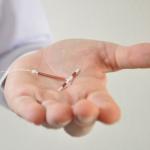
What are the 5 Reasons to Ask About Uterine Fibroid Embolization (UFE)?
Over 62% of women in the U.S. have never heard of non-surgical fibroid treatment options and over 20% of women think a hysterectomy is their only choice. Surgery is not always the best option available to treat fibroids. Common symptoms that could indicate fibroids include heavy menstrual flow, cramping, frequent urination, and pressure.
It’s surprising to learn so many women don’t know their options when they are first diagnosed with fibroids. As healthcare providers, we make it our mission to educate our patients fully so they are able to make the best decision that fits their needs.
We think women shouldn’t have to choose between losing their uterus, and permanent relief from fibroid symptoms. Constantly missing work, canceling plans, and scheduling your life around being close to a restroom, shouldn’t be the “norm” for any woman. For many women, fibroid symptoms can become debilitating – negatively impacting their life in many ways.
Many women are reluctant to get surgery, even though invasive surgeries are medically-necessary to remove fibroids. Invasive surgeries may be the right choice for some women; however, many women avoid treating their fibroids because they are unaware of other available options.
Uterine fibroid embolization (UFE) – also known as Uterine Artery Embolization – offers the best alternative to surgery to treat fibroids. The procedure does not involve the removal of your uterus, does not interfere with hormones, does not require general anesthesia, offers a shorter recovery, and does not negatively impact other organs.
Here are the 5 Reasons to Ask about UFE
1. Treat Multiple Fibroids.
The interventional radiologist uses advanced ultrasound technology to observe the blood flow of a particular fibroid and block the supply to it. If multiple fibroids need treatment, the radiologist can adjust the position of the catheter accordingly and all the fibroids can get treatment in a single procedure.
2. Preservation of the uterus
Hysterectomy either partially or fully removes the uterus. Even with a myomectomy, the tissue of your uterus needs to be cut into it in order to remove the fibroids. With UFE, your uterus is preserved as the fibroids are made to shrink and eventually die through inserting a catheter into the artery, leaving the possibility for you to conceive in the future.
You can read about the differences between UFE and hysterectomy here: https://www.usafibroidcenters.com/uterine-fibroid-treatment/hysterectomy-vs-ufe/
3. Less risk than invasive fibroid treatments
There are fewer risks with UFE as the procedure doesn’t require general anesthesia, which is the norm with many surgeries. Only a light sedative is necessary during treatment. You will be drowsy and very relaxed. Complications such as pelvic infection, bleeding, or injury to internal organs associated with surgical procedures, such as a hysterectomy or myomectomy, are highly unlikely with UFE.
4. Limited scarring
During a UFE procedure, the interventional radiologist will insert a tiny IV catheter into your groin. Once the catheter is in place, they will inject beads of embolic agents into your blood vessels to block the supply of blood to the fibroids. The specialist will then cover the injection site with a bandage. No stitches are needed. The chance of developing scar tissue within the abdomen is minimal because the procedure is performed within the artery.
5. Quick recovery
You may experience cramping, which is usually the most uncomfortable 24 hours after the procedure and is typically treated by pain medication. For a week after the procedure, the cramping will be mild, and you may feel fatigued and have nausea. UFE is performed as an outpatient procedure; therefore, most women are back to their normal activities the second week after the procedure.
You can visit USA Fibroid Centers if you’re interested in experiencing the benefits of uterine fibroid treatment. Our fibroid specialists use the latest technologies and tools for fibroid pain and symptom treatment. We have multiple locations across America – including in New York, Georgia, Florida, New Jersey, Pennsylvania, and more. USA Fibroid Centers accepts most major health insurances and Medicaid. We also offer self-pay options. Our interventional radiologists have earned an unmatched reputation by treating thousands of women across the United States.
Do You Have More Questions about UFE?
Please call us at (855) 615-2555 to discuss any questions with one of our patient care coordinators. You can also schedule an appointment online to discuss your condition and treatment options.



